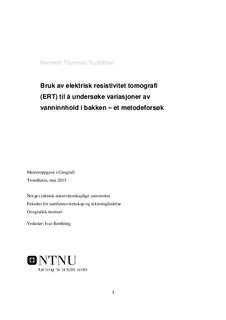| dc.description.abstract | This master's thesis is written for Jernbaneverket (the Norwegian National Rail Administration), in relation to the NIFS project (natural hazards, infrastructure, floods and landslides). Climate change presents an increased factor of natural hazards related to hydrological issues.
The ERT method was used to investigate the difference in resistivity for different types of vegetation that could be linked to potential water content. ERT surveys were carried out in four locations in Soknedal (located in the middle of Norway). Four slopes were surveyed: two had grass vegetation, one had forest vegetation, and the last slope had mixed vegetation.
The results indicate a pattern where forest vegetation has higher resistivity values than smaller vegetation, for example grass. The ERT method has shown to be useful to investigate the role of water content in soils. | nb_NO |
